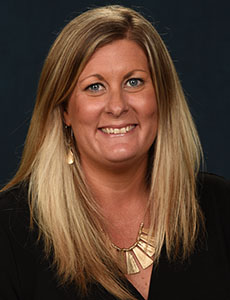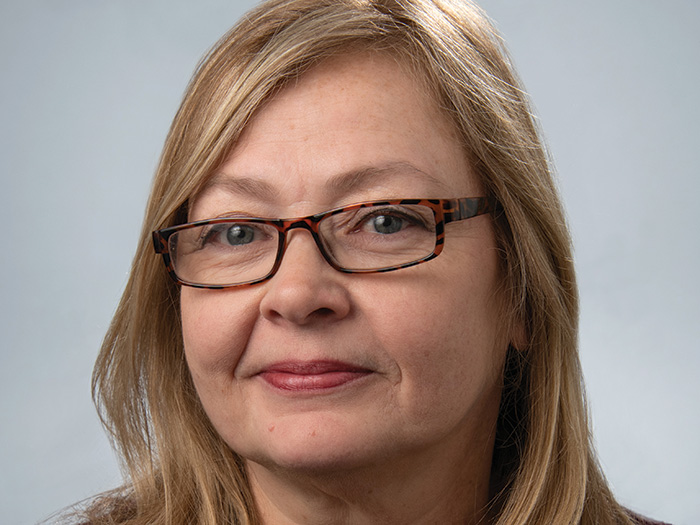Sponsored Content by One Call
For Injured Workers Receiving Physical Therapy, Keeping Up a Steady Pace Toward Recovery Depends on Who Oversees Their Referral

When a physician orders physical therapy to treat a worker’s injury, having a clinically trained team available to assist the injured worker throughout the life of their referral is critical.
How quickly the worker begins treatment, progresses through recovery, and returns to work can be positively influenced by selecting the right provider of service and having a collaborative team approach between all parties overseeing the journey.
“Our data shows that injured workers who begin therapy within three days of an injury need 38% fewer physical therapy visits to achieve successful outcomes,” Jill Hunter, vice president of product delivery at One Call explained.
“On the other hand, if an injured worker starts therapy more than 30 days post injury, the time to discharge increases from less than three weeks to almost six weeks,” Hunter said.
One Call places a priority on getting injured workers into treatment right away. Taking a clinical approach to guiding injured workers toward the appropriate therapeutic practice, Hunter said, “results in 100% of our prospective cases having clinical oversight applied.”
“Our program was designed, and is supported by licensed clinicians and industry experts, to ensure our injured workers achieve maximum return to health and have a positive experience,” she added.
From finding a credentialed provider to facilitating communication between therapists and all parties involved in the workers’ compensation claim, clinical oversight translates to significant recovery achievements for injured workers and substantial savings for payers.
In 2021, One Call’s patient-centric approach to managing physical therapy referrals resulted in an average of $1,096 in clinical savings per referral and $235 million in total cost avoidance for clients.
Meeting Injured Workers Where They Are

Jill Hunter, Vice President of Product Delivery, One Call
A successful journey toward recovery begins with meeting injured workers where they are. One Call aims to make physical therapy as accessible as possible for injured workers. “It’s easy with us,” Hunter said.
With a focus on getting injured workers scheduled for therapy right away, One Call uses interactive voice response (IVR) technology and SMS text services to begin outreach within just a few hours of receiving a referral.
Recognizing each injured worker’s unique set of life factors can influence their ability to start treatment, One Call’s “PT Where You Are” concept delivers physical therapy in ways that are most convenient for the injured worker.
“Whether it’s delivered virtually through our telerehab program, accessed in the home via the mobile PT program [which is outpatient PT performed in the home, not home healthcare], on-site at an employer’s location, or accessed traditionally in an outpatient, brick and mortar setting —our network offers a well-rounded, holistic program,” Hunter noted.
Providing alternative delivery methods has made physical therapy accessible to injured workers whose lives have become increasingly complex due to the COVID-19 pandemic. “We understand not everyone can make the same delivery option work,” Hunter said.
“[Traveling] five miles three times a week might be a lot for some folks,” she added. “We realize this, so we provide injured workers with options that work for them to ensure they can get the care they need when they need it.”
At One Call, the focus from the start is on identifying the right provider. “A provider that is convenient for the injured worker, a provider that offers the service, and a provider that has a return-to-work focus,” Hunter said.
Investing in the expansion of its “PT Where You Are” approach has helped propel One Call clients to experience a 92% national scheduling in-network success rate.
Staying Ahead of At-Risk Claims
For many workers with previous injuries and existing health conditions, the journey to recovery could be lengthy and potentially costly for the payer. But getting ahead of the potential challenges can save time and expense for the payer, as well as frustration on the part of the injured worker.
Through its optional proprietary “At-Risk Program,” One Call has established a set of comorbidities and patient attributes to help proactively identify injured workers who may be at-risk of poor recovery. This additional identification program, which is available upon request, is done using machine learning and optical character recognition (OCR) technology. Injured workers identified through this process will have additional clinical oversight by One Call from the start of care through to discharge.
Injured workers who present one or more of the identified comorbidities — such as the increasingly common post-acute sequalae of COVID (PASC) commonly known as “long COVID” — or an array of potential psychosocial barriers to recovery are quickly identified so additional support can be arranged.
“It is about ensuring injured workers get the appropriate amount and duration of therapy,” Hunter stated.
For claims professionals seeking data driven insights about the recovery journey, One Call offers actionable trigger alerts. These notifications are tailored to specific criteria and allow the claims handler to engage a targeted action. This alert option is one more tool to help drive positive claim outcomes.
In addition to a traditional suite of rehabilitation services, including functional capacity evaluations, ergonomics, and employer services, One Call now offers a specialized rehab and recovery program focused on injured workers experiencing PASC.
Upholding Gold Standards of Care
Finding the most efficient and effective path for an injured worker’s recovery requires collaboration among all parties.
“We’re not trying to be an intermediary that creates additional work [for therapists],” Hunter said. Through One Call’s interactive portal, therapists can seamlessly share their notes and documentation. We do not require additional paperwork or use of our own documents that we know create additional work for our provider partners.
“We’re looking at expanding direct connectivity with providers,” Hunter said, with the goal of removing administrative tasks on both sides.
“And then we do a really great job of telling them how they’re doing,” Hunter explained.
One Call has developed a proprietary scoring program that evaluates an array of factors associated with a provider’s ability to get injured workers back to health quickly and appropriately.
With a 99% network adequacy rating for physical and occupational services, providers in the One Call network were able to deliver best-in-class care, all while reducing the number of prescribed visits by 34% in 2021.
For injured workers who experienced the top 10 injuries, One Call network therapists helped them regain their ability to return to work with 30% fewer visits than anticipated by the official disability guidelines (ODG).
In situations where providers are treating injured workers beyond ODG benchmarks, One Call applies its Gold Standard Review®, which involves clinician-to-clinician support and review of the case. When conducting these reviews, One Call ensures licensures are aligned.
“If it’s a chiropractic referral, it’ll be a chiropractor to a chiropractor review,” Hunter said. “Providers discuss the case with someone who speaks their language and understands what is going on. This makes it an effective use of time.”
The program’s focus on clinical oversight helps to ensure injured workers are receiving the right amount of treatment – not too much and not too little – so they are 100 percent able to return to their work duties, or as close as possible based on the injury and person.
Beyond shorter, effective treatment durations and cost savings, Hunter said, “it is an injured worker’s experience, perceptions, and realities,” that are the true markers of success.
To learn more, visit: https://onecallcm.com/solutions/physical-therapy/.
This article was produced by the R&I Brand Studio, a unit of the advertising department of Risk & Insurance, in collaboration with One Call. The editorial staff of Risk & Insurance had no role in its preparation.










